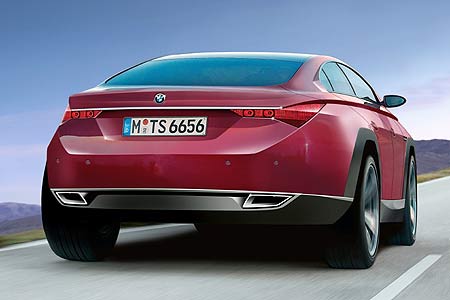2010 Toyota Matrix
The Corolla-based 2010 Toyota Matrix hatchback reminds us that the folks at Toyota can still make a darned good small car when they put their minds to it. We've been underwhelmed by the latest Corolla, to put it mildly, but its Matrix cousin is a thoroughly competent effort. It's certainly no hot rod, but we're pretty sure most compact hatchback or wagon buyers care more about practicality than performance. And for them, the 2010 Matrix is one of the most compelling choices in this segment.
In many ways, the Matrix is like Corolla version 2.0. Its sheet metal is far more stylish, its 3 extra inches of height boost passenger space, and its convenient hatchback/wagon design means you can haul a lot of stuff. This cargo-carrying capacity is one of the Matrix's biggest draws -- with 61.5 cubic feet of space, this modestly sized Toyota can haul nearly as much as some compact SUVs. Yet its fuel economy with the base 1.8-liter engine is still quite good at 28 mpg combined. The Matrix costs a grand or two more than the Corolla, but its verve and versatility make it well worth the extra coin.
Unfortunately, the economical 1.8-liter engine is only available on the base model. If you want the additional feature content of the S or XRS model, a larger 2.4-liter engine is mandatory. The 2.4 engine adds some punch, but fuel economy drops to 24 mpg combined. All-wheel drive is optional on the S model, dropping fuel economy to 22 mpg. Notably, both the S AWD and XRS models feature a more advanced independent double-wishbone rear suspension in place of the standard torsion-beam setup, moderately improving the Matrix's handling behavior.
The 2010 Toyota Matrix is a compact hatchback available in three trim levels: base, S and XRS. All-wheel drive is optional on the midrange S. The base car features 16-inch steel wheels, power mirrors, air-conditioning, a CD stereo with an auxiliary audio jack, a tilt-and-telescoping steering wheel and a fold-flat front passenger seat. Cruise control, keyless entry and power windows and locks are optional on this version of the Matrix but standard on the S, which also adds a rear window wiper, underbody spoilers, an upgraded stereo and a 115-volt utility outlet. The all-wheel-drive version of the S loses the spoilers, but it gains foglights and an independent rear suspension. The top-of-the-line Matrix XRS tacks on 18-inch alloy wheels, a rear roof spoiler, sport-tuned suspension and steering, upgraded seat fabric and a leather-wrapped steering wheel.
On the base front-wheel-drive Toyota Matrix, you'll find a 1.8-liter four-cylinder engine rated at 132 horsepower and 128 pound-feet of torque. A five-speed manual transmission is standard, and a four-speed automatic is optional. Matrix S and XRS models upgrade to a 2.4-liter engine that makes 158 hp and 162 lb-ft of torque, as well as an optional five-speed automatic alongside the standard five-speed manual. The AWD S comes only with the four-speed automatic
The 2010 Toyota Matrix comes standard with stability control and antilock disc brakes, with the S and XRS boasting larger discs all around. Also standard are front-seat side airbags and full-length side curtain airbags. In government crash testing, the Matrix scored a perfect five stars for frontal and front-seat side impacts, dropping to four stars for rear-seat side impacts. The Insurance Institute for Highway Safety awarded the Matrix its highest rating of "Good" in both frontal-offset and side impact crash testing.
The base Matrix accelerates sluggishly off the line with its 1.8-liter engine, but its admirable fuel economy will redeem it in the eyes of many shoppers. The 2.4-liter engine in the S and XRS is the opposite -- power is ample, but fuel economy is just OK. The ride is smooth and well-insulated. The 2010 Toyota Matrix may not be the sportiest economy hatchback, but its refinement is laudable.

Source:Carslegend.blogspot.com
























0 comments:
Post a Comment
Please Give Us Your Feedback...